 |
 |
 |
| |
Pharmacokinetic Interaction Between the HCV Protease Inhibitor Boceprevir and the Calcineurin Inhibitors Cyclosporine and Tacrolimus
|
| |
| |
Reported by Jules Levin
16th Annual Meeting of HEP DART, December 4-8, 2011, Koloa, Hawaii
EGJ Hulskotte,1 S Gupta,2* F Xuan,2 MGJA van Zutven,1 E O'Mara,2* L Galitz,3 JA Wagner,2 JR Butterton2
1MSD, The Netherlands; 2Merck Sharp & Dohme Corp., Whitehouse Station, NJ, USA; 3Cetero Research, Miami, FL, USA
*Former employee of Merck Sharp & Dohme Corp., Whitehouse Station, NJ, USA
ABSTRACT
Background: Boceprevir is a potent, orally administered NS3 protease inhibitor, recently approved for the treatment of chronic hepatitis C genotype 1 infection. Infection with the hepatitis C virus is the principal reason for liver transplantation. The immunosuppressants cyclosporine (CsA) and tacrolimus (TAC) are used in solid organ transplantation to prevent rejection. Boceprevir is an inhibitor of CYP3A4, which is responsible for the metabolism of both CsA and TAC. This study was conducted to evaluate the pharmacokinetic interaction of boceprevir with CsA and TAC.
Methods: This was a 2-part, open-label, fixed-sequence study in 32 healthy volunteers. In part 1, 10 subjects received a single 100-mg dose of CsA followed by a single 800-mg dose of boceprevir on day 2, and concomitant CsA and boceprevir on day 3. This was followed by a washout period, after which subjects received 800 mg boceprevir TID for 7 days. On day 6, subjects concomitantly received a single 100-mg dose of CsA. Part 2 evaluated the PK interaction between boceprevir and TAC. In part 2A, 12 subjects received a single 0.5-mg dose of TAC. Following a washout, they received 800 mg boceprevir TID for 11 days. On day 6, subjects concomitantly received a single 0.5-mg dose of TAC. In part 2B, 10 subjects received a single 800-mg dose of boceprevir; 24 hours later, they received 800 mg boceprevir concomitantly with 0.5 mg TAC. Blood samples were collected for determination of PK of CsA, TAC, and boceprevir. Safety assessments included electrocardiograms, vital signs, clinical laboratory tests, physical examination, and adverse event monitoring.
Results: Co-administration of boceprevir with CsA or TAC was safe and well tolerated in this group of healthy volunteers. All subjects enrolled completed the trial. Concomitant boceprevir administration increased the AUCinf and Cmax of CsA with geometric mean ratios (GMRs) [90% CI] of 2.7 [2.4, 3.1] and 2.0 [1.7, 2.4], respectively. Concomitant boceprevir administration had a pronounced effect on TAC: the AUCinf and Cmax of TAC increased with GMRs [90% CI] of 17 [14, 21] and 9.9 [8.0, 12], respectively. CsA and TAC co-administration had no meaningful effect on the pharmacokinetics of boceprevir.
Conclusion: The magnitude of the potential interaction between CsA or TAC and boceprevir in organ transplant patients is not known, but could potentially be higher and more variable than that seen in healthy volunteers. Concomitant boceprevir and TAC treatment would likely require significant dose reduction and/or prolongation of the dosing interval, with close monitoring of TAC concentrations and frequent assessments of renal function and TAC-related side effects. Co-administration of cyclosporine with boceprevir may require dose adjustment of CsA and close monitoring of cyclosporine blood levels as well as frequent assessments of renal function and CsA-related side effects.
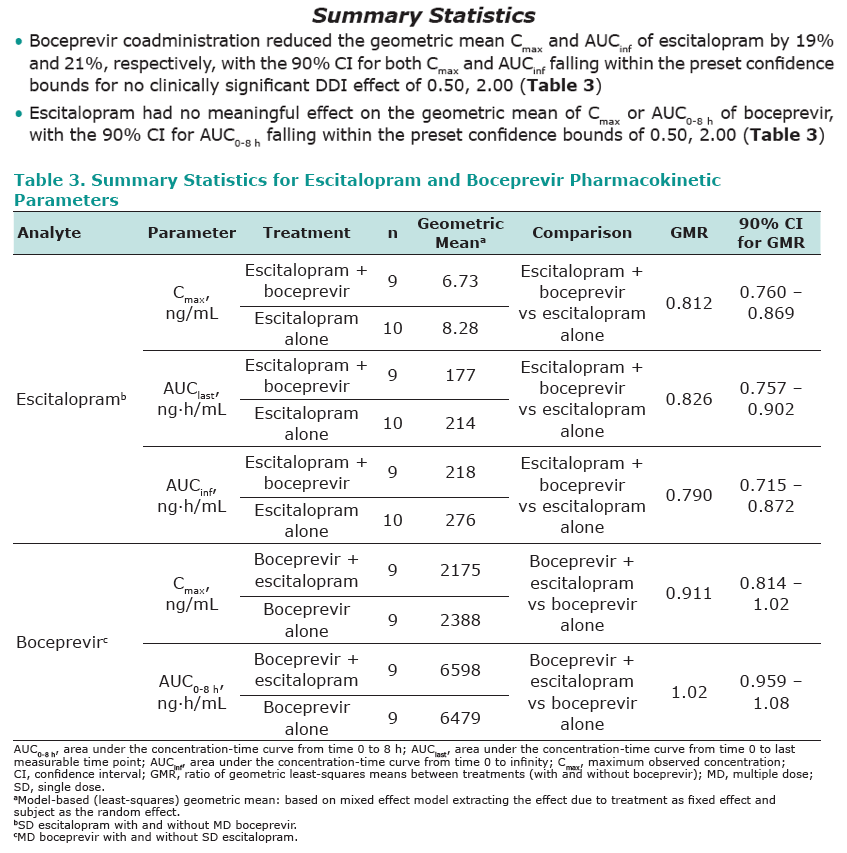
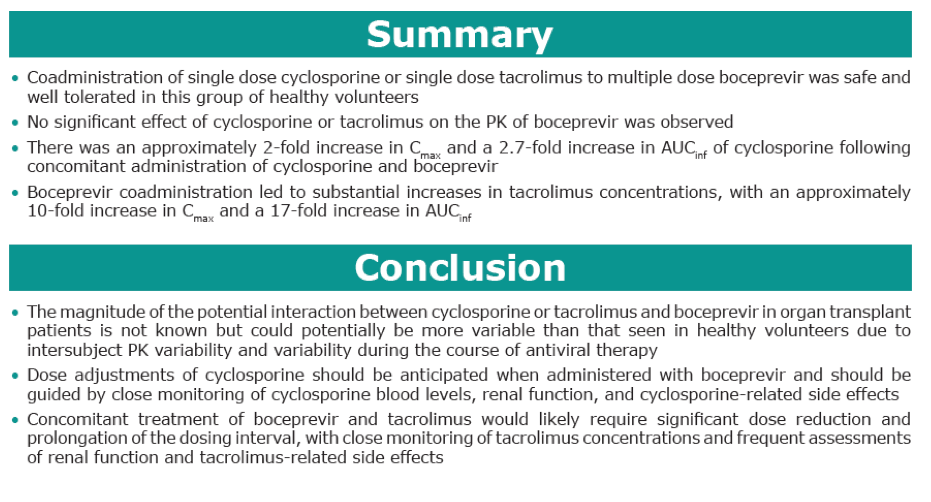
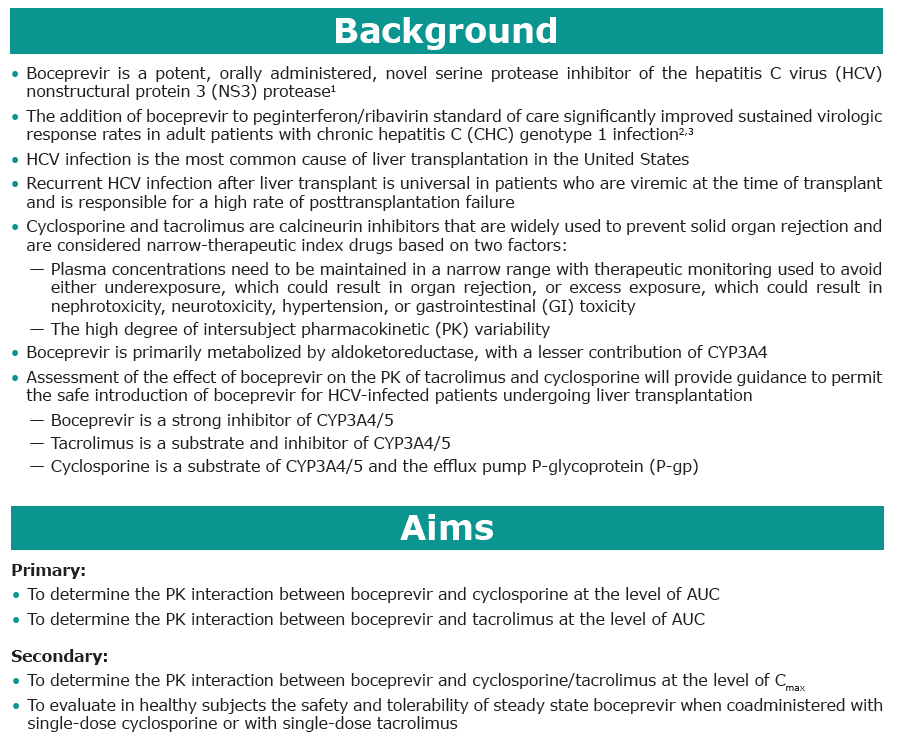
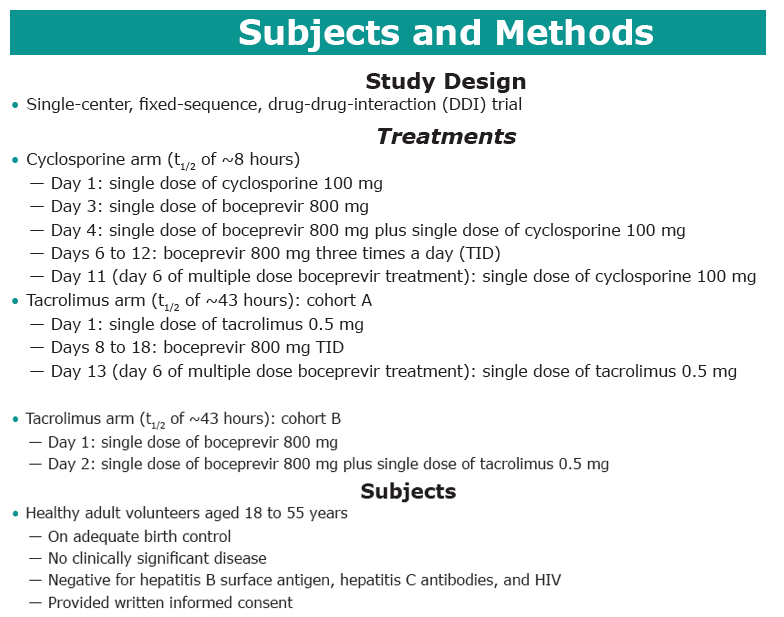
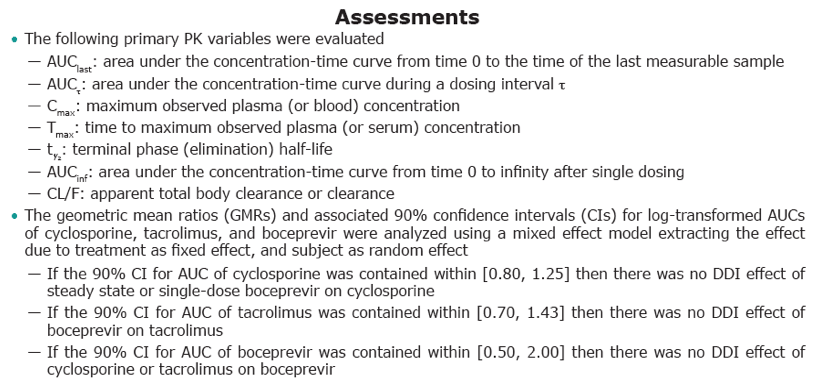
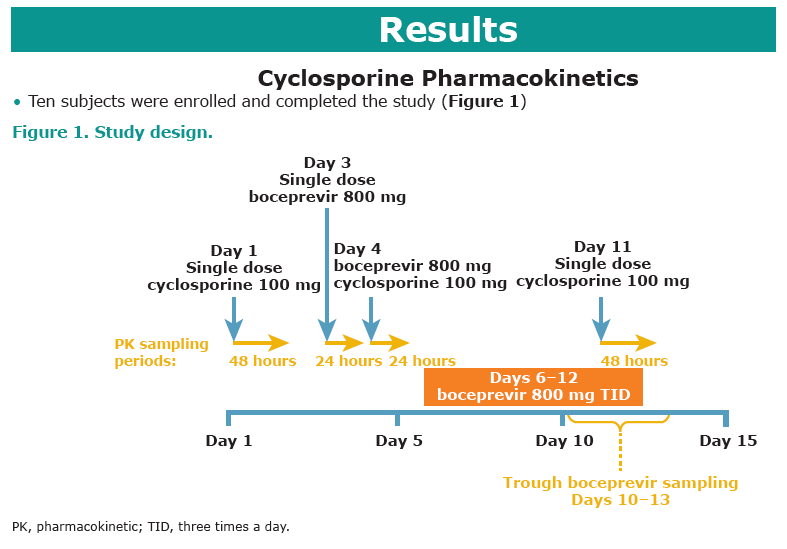
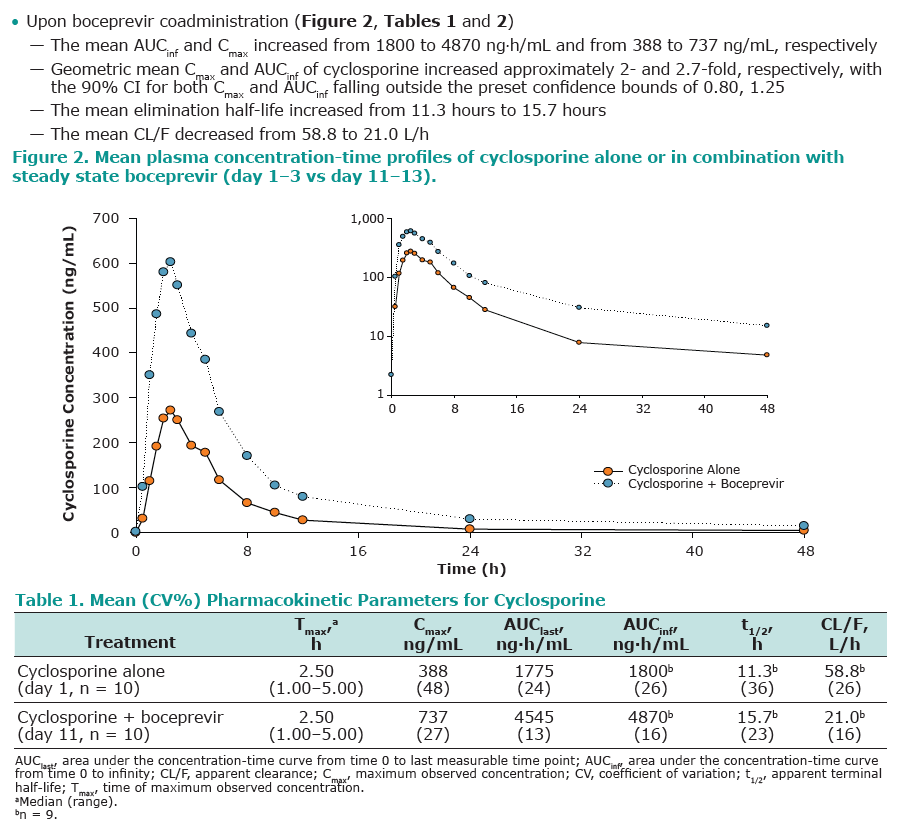
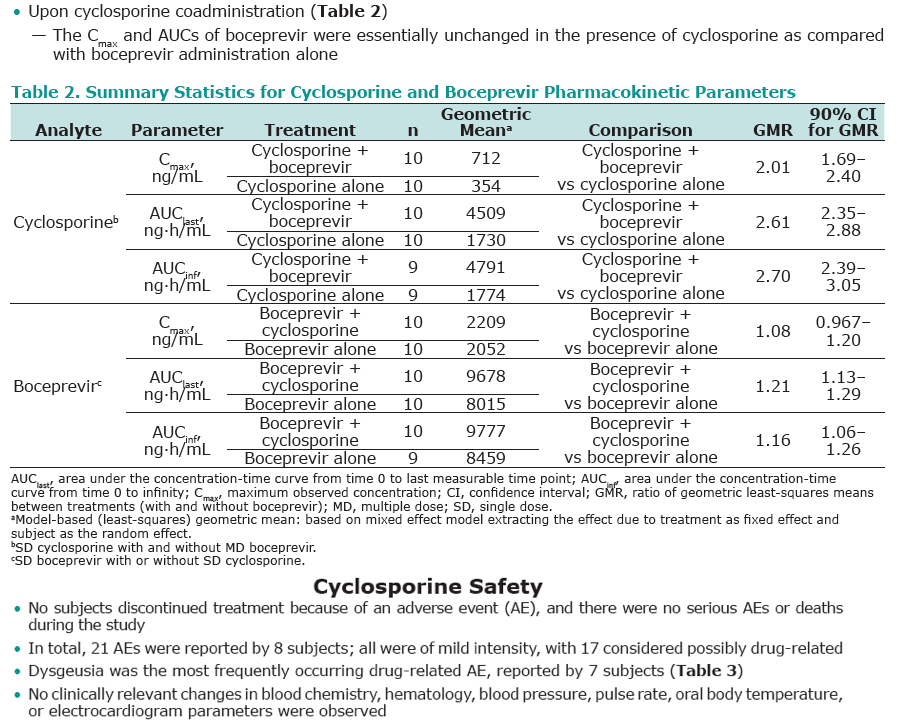

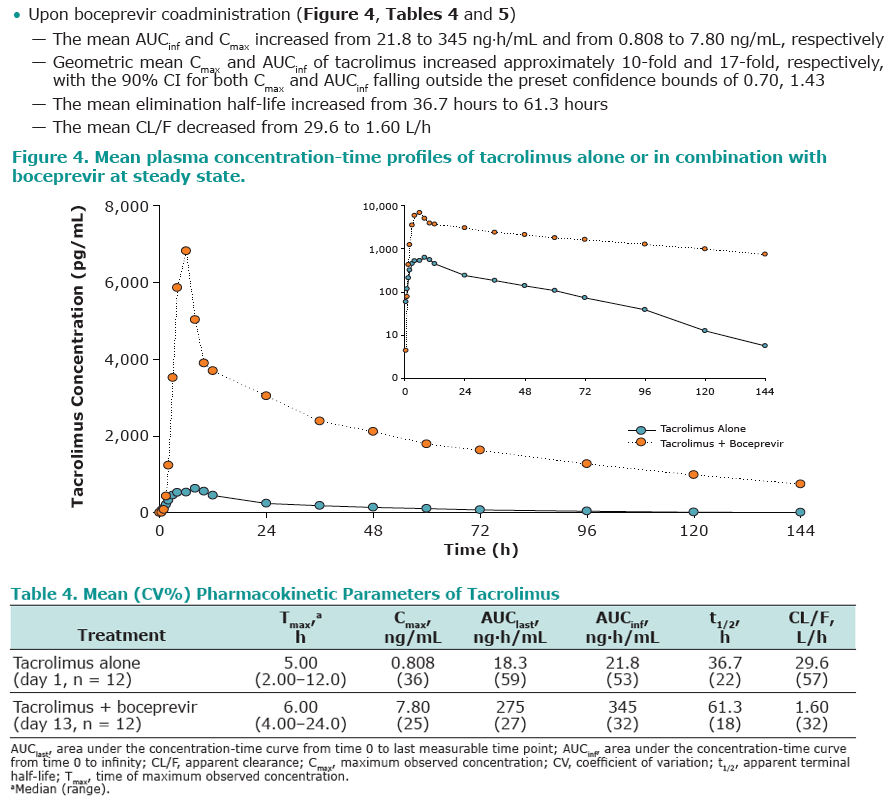
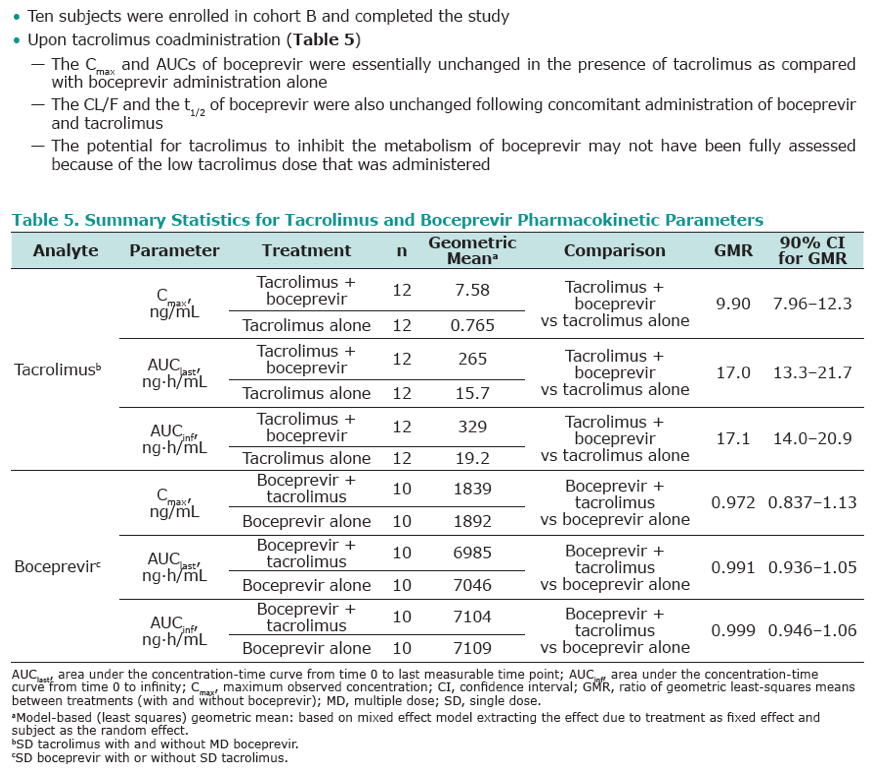
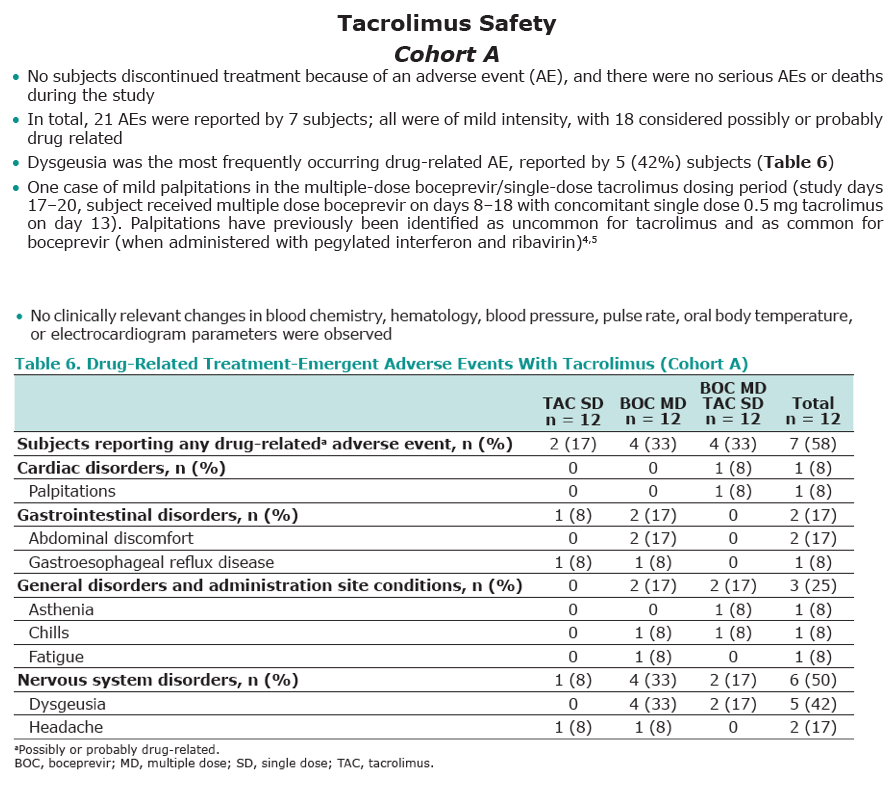
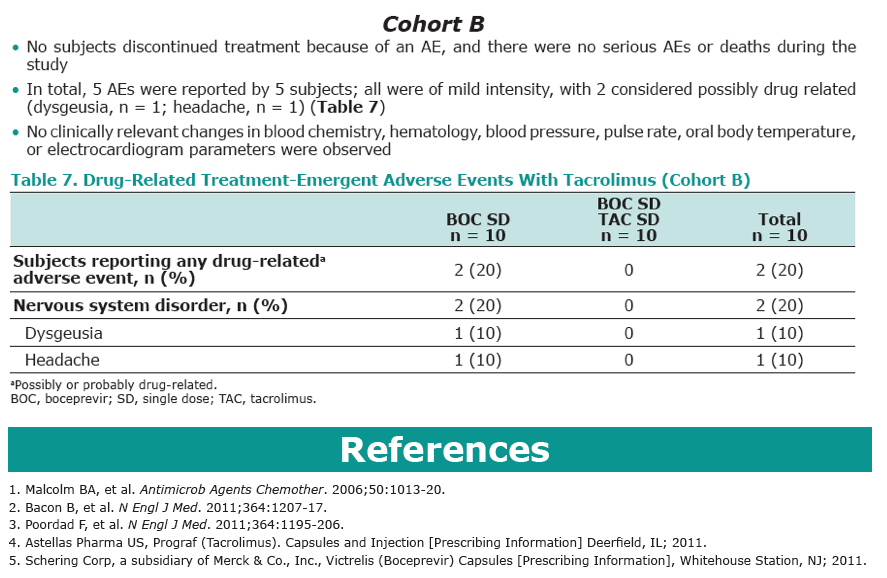
|
| |
|
 |
 |
|
|